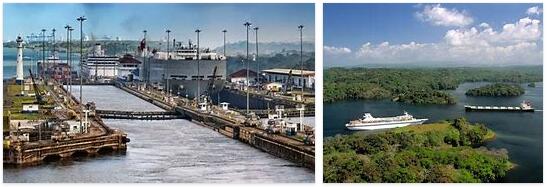According to internetsailors, Panama is located on the narrowest stretch of the American mainland, with only 80 kilometers of land between the coastof the Caribbean Sea and the Pacific Ocean. The most comfortable way to cross the country is to take a historic luxury train that takes passengers from one coast to the other in just 57 minutes, past tropical vegetation, lakes and mountains.
The capital of Panama, Panama City, is a colorful, lively metropolis.
The people who live in Panama are so diverse in their cultural origins, their origins and their traditions that you only need to look around once at a market in the cities to know what a colorful mix of people live here together.
The people who live here are called Panamanians. While the population did not get particularly old in the past, medical care has steadily improved over the past few years, and today we can speak of an average life expectancy of 70 to 73 years.
The population in Panama consists of about 70 percent mestizos, which are mixed race with Indian and European ancestors. The group of blacks and mulattos, are represented at around 14 percent in Panama. Whites make up about 10% of the population in Panama, about 6 percent of the people in Panama are indigenous.
Despite the many influences, most of the people in Panama belong to the Christian faith : 85 percent are Catholics and 15 percent are Protestants. In addition, about 10,000 Jews and as many Muslims live in Panama.
Area: 75,420 km² (land: 74,340 km², water: 1,080 km²)
Population: 3.5 million people (July 2010, CIA). Mestics (indigenous and white roots) 70%, residents with indigenous and West Indian roots 14%, whites 10%, Amerindians 6%.
Population density: 46 people per km²
Population growth: 1.435% per year (2011, CIA)
Capital: Panamá (406,070 residents, 2006)
Highest point: Volcano Baru, 3,475 m
Lowest point: Pacific and Caribbean, 0 m
Form of government: Panama has been a presidential republic since 1972. The constitution dates from 1983, the last change was made in 1994. The unicameral parliament consists of 71 members. Panama has been from November 28, 1821 Spain independent, on November 3, 1903, the country broke away from Greater Colombia.
Administrative division: 11 provincias (Bocas del Toro, Comarca Kuna Yala, Comarca Ngobe-Bugle,Chiriqui, Cocle, Colon, Darien, Herrera, Los Santos, Panama and Veraguas) as well as a comarca (San Blas).
Head of State and Government: President Ricardo Martinelli, since July 1, 2009
Language: The official language in Panama is Spanish, English is the lingua franca in the country. Various Indian languages are also spoken.
Religion: Catholics 85%, Protestants 15%. Immigrants from the Caribbean islands are mainly Methodists, Baptists or the Episcopal Church.
Local time: CET – 6 h.
In Panama there is no change between summer and winter time.
The time difference to Central Europe is -6 h in winter and -7 h in summer.
International phone code: +507
Internet ID:.pa
Mains voltage: 110 V, 60 Hz. American plugs are used, so adapters are necessary.
Panama geography
Panama has an area of 78,200 km², the coastlines are a total of 1,915 km long. In the east the country borders on Colombia, Costa Rica is in the west of Panama, in the north there is the Caribbean and in the south the Pacific Ocean. The S-shaped Panama has an east-west extension of 772 and is between 60 and 177 km wide.
Here is an accurate topographic map of Panama.
Panama lies on the narrowest part of the Central American land bridge and represents the link between North and South America. The 65 km long Panama Canal flows through the isthmus between the Cordillera de Talamanca and the Cordillera de San Bla and creates the connection between the Caribbean and the Pacific. The Central American Cordillera, which runs parallel to the coast of Panama, has the highest mountain in the country in the west with the volcanic cone of Volcán Barú (3477 m).
The most densely populated regions are located on the Pacific coast and near the canal. More than 50% of the population lives in cities. 75% of the country’s area is only very sparsely populated.
The landscape is generally mountainous and descends on both the Caribbean and Pacific coasts on riverside plains. The inland (El Interior) between the Peninsula de Azuero and the central mountain range is characterized by a wide, hilly savannah.
Panama climate
Panama in Central America lies between Colombia in the southeast and Costa Rica in the West. The north coast of Panama points to the Caribbean, the south coast to the Pacific. The climate in Panama is tropical, which means that the temperatures change little over the course of the year or day.
In Panama you can find two different seasons. The dry season lasts from mid-December to mid-April, the rainy season is between mid-April and December. North of the mountains, on the Caribbean side of Panama, it rains all year round. There tends to be less rain in February, March, September and October.
The temperatures in the lowlands of Panama are high all year round – the maximum temperatures here reach around 32 ° C, the minimum temperatures are around 22 ° C. During the rainy season, the high humidity makes the heat even more difficult to bear. Temperatures in the mountains are much lower at 10 to 18 ° C. Here, too, the temperatures vary only slightly over the year.
